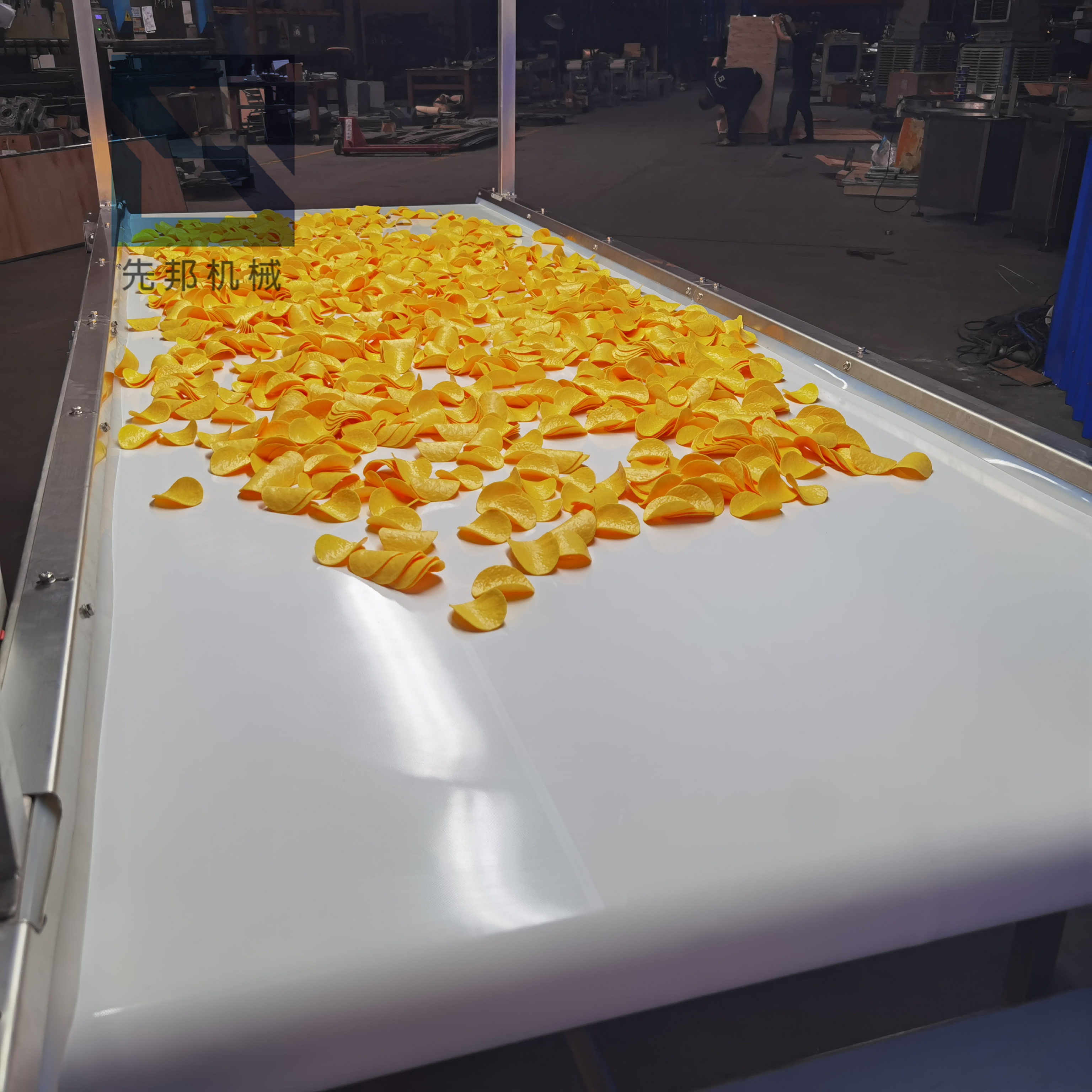In the modern food production process, an efficient and safe conveying system is crucial. As an advanced conveying equipment, food grade PU belt conveyor is gradually receiving a lot of attention and application.
Food grade PU belt conveyor has many advantages. Firstly, the PU material it adopts has good abrasion resistance and corrosion resistance, and can run stably for a long time under the harsh working environment. Secondly, the belt surface of this conveyor is flat and smooth, which is not easy to adhere to the material, ensuring that the food will not be contaminated in the conveying process.
In the food production line, food grade PU belt conveyor plays an important role. It can realize the continuous conveying of foodstuffs, improve the production efficiency and meet the needs of mass production. Whether it is conveying granular, powdery or lumpy food, it can ensure stable conveying speed and precise conveying position.
Its design also focuses on hygiene and cleanliness. Easy to clean and maintain, it can effectively avoid bacterial growth and cross-contamination to ensure the safety and hygiene of food. At the same time, its compact structure and small footprint make it easy to install and use in limited space.
In order to ensure the normal operation and good performance of food grade PU belt conveyor, the following points need to be noted:
1. Installation environment: choose a dry, well-ventilated place with no corrosive substances.
2. Base leveling: Make sure the installation base is level and firm to avoid shaking when the conveyor is running.
3. Accurate alignment: the installation position of each component should be accurately aligned to ensure the smooth running of the conveyor.
4. Tension Adjustment: Reasonably adjust the tension of the belt, too tight or too loose will affect the service life and performance.
5. Cleaning and sanitation: Clean the parts before installation to avoid impurities from entering the conveyor.
6. Lubrication and maintenance: Regularly lubricate the bearings, sprockets and other parts to prolong the life of the equipment.
7. Daily cleaning: keep the surface of the conveyor clean to prevent accumulation of dust and dirt.
8. Belt inspection: pay attention to the wear and tear, scratches, etc. of the belt and repair or replace it in time.
9. Roller inspection: check whether the roller rotates flexibly and there is no wear or deformation.
10. sprocket chain: make sure the sprocket and chain are well meshed and adequately lubricated.
11. Electrical system: check whether the electrical connection is reliable to avoid leakage and other safety hazards.
12. Overload protection: avoid overload operation and prevent equipment damage.
13. Regular inspection: formulate regular inspection program to find and solve potential problems in time.
14. operation training: training for operators to ensure the correct use and maintenance of equipment.
15. Spare parts reserve: reserve the necessary spare parts in order to replace damaged parts in time.
In conclusion, food grade PU belt conveyor is an indispensable part of food production. It provides efficient and reliable conveying solutions for food production enterprises and guarantees the quality and safety of food.
Post time: Feb-17-2025

